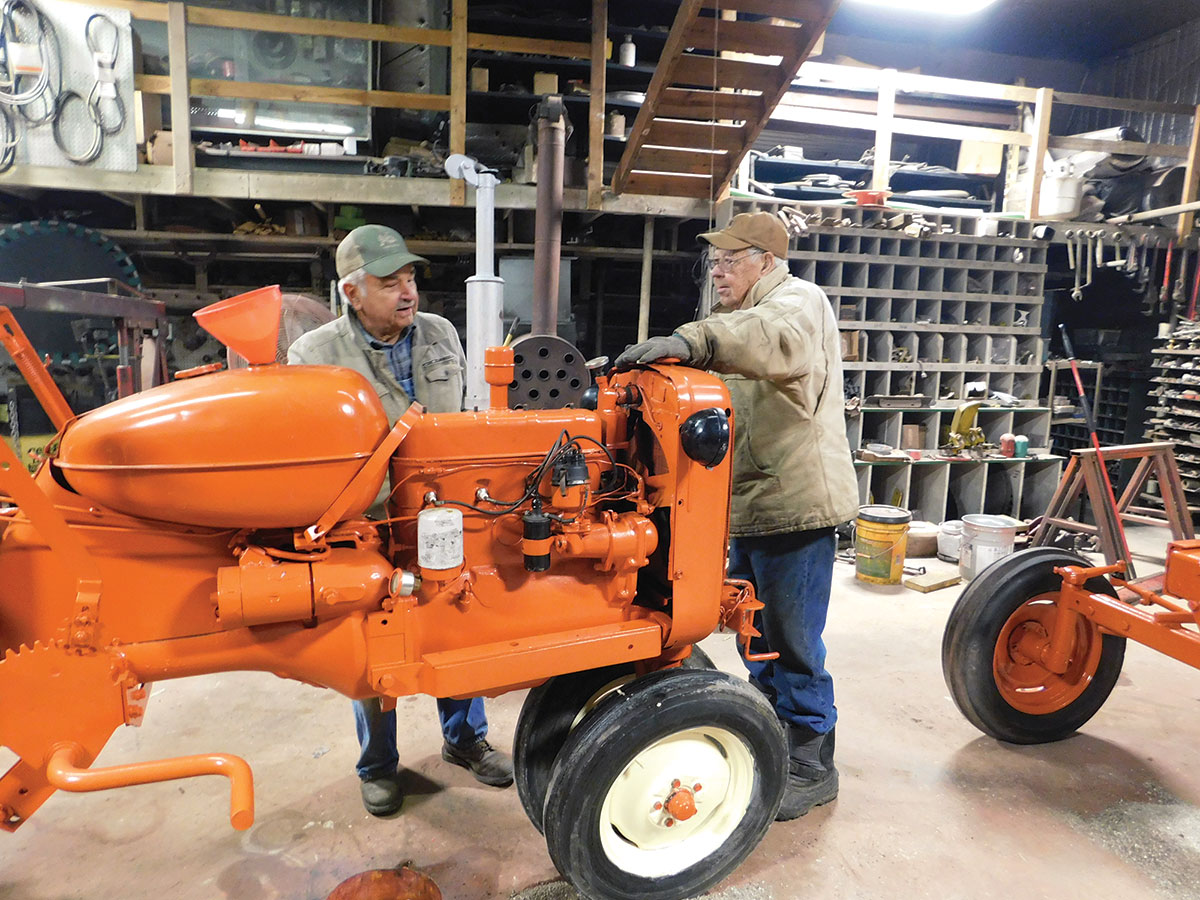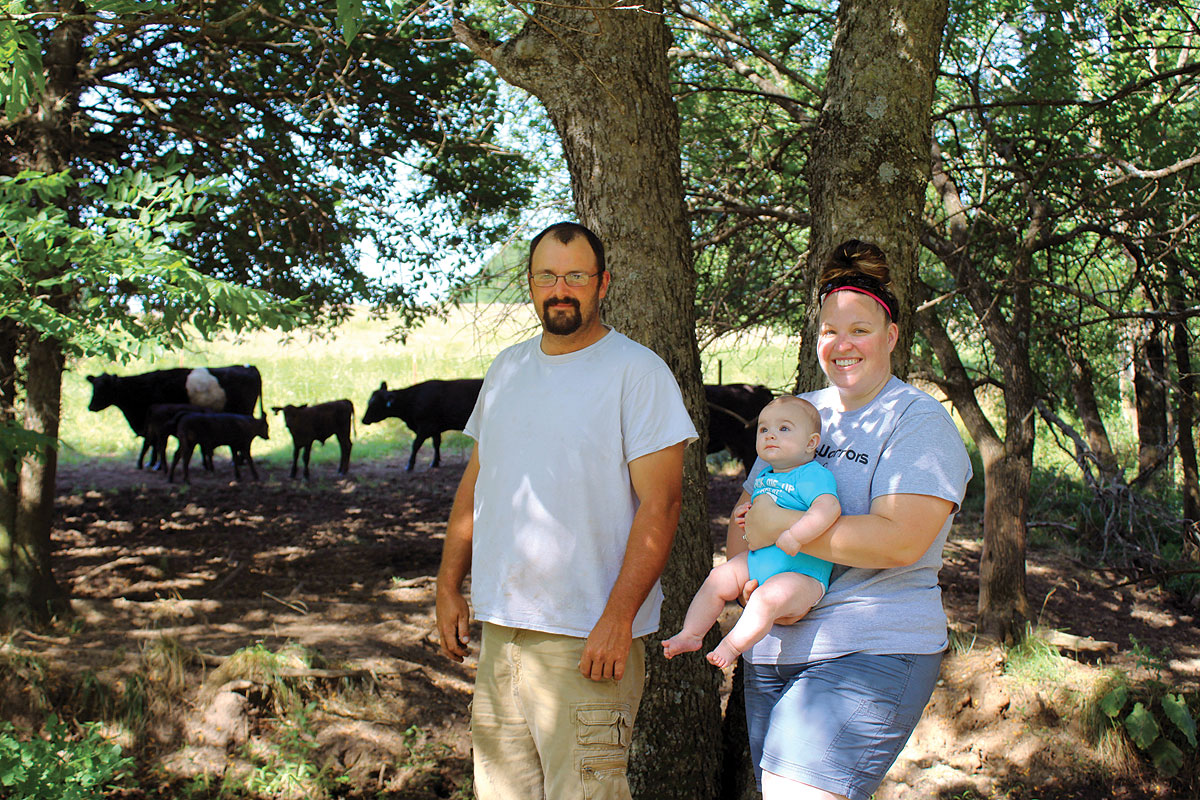
For Ed and Stephen Darnell country and farm life is all they’ve really known from growing up in Willow Springs, Mo. “Mom and dad bought this farm in 1972,” explained Ed. “So this farm is where I grew up and what I know best.”
His parents Don and Bonnie Darnell are still active on the farm.
The Darnell’s got started raising Simmental in 1979. “We used artificial insemination to breed a couple of cows to a purebred Simmental bull,” Don explained. “We bought the first purebred heifer in 1981.”
“There are actually three separate operations here at Pine Creek Farms,” Ed said. “My wife, Stacey, and I currently run 40 purebred Simmental mama cows. Dad runs about 60 mama cows that are half Simmental and he uses Red Angus bulls. My brother Stephen has about 100 mama cows and raises feeder calves,” Ed added.
“I have started crossing with the Red Angus because they are cattle that are in good demand and with a smaller frame they are easier to keep,” Don said. “They are also very heat tolerant.”
“We seek out more renowned breeders to get our genetics from,” explained Ed. “We started out using AI to obtain some of those genetics, but some of those bulls didn’t have proven data and EPDs available so you weren’t sure what you would get. By searching out bulls from renowned breeders, you can visually see the cattle and conditions they are raised in.
“We chose to stay with Simmentals because of their disposition, growth and weaning weights and their milking abilities,” Ed said.
All of the cattle Ed and Stacey raise are registered animals, giving them the option for data and information through the registry and even the carcass merit program. “This is a way to find bulls with good data,” he said. “By watching their numbers and that of their offspring, I can determine if they’re going to work for us – meaning can they use the grass and raise the calves without extras? We want them to do it with what’s available out in the fields.
“I sell feeder calves and actually keep replacement heifers and sell bulls private treaty. Commercial cattlemen want livestock that will work, and that doesn’t always have to be a pureblood bull,” Don said.
Stephen explained he utilizes Simmental and Angus bulls in his commercial herd. “I have three Simmental bulls and one Angus that I primarily use for heifers.
“We market bulls and heifers private treaty from the farm,” explained Ed. “I actually encourage buyers to come to the farm and view the calves while they are still on the mama cows. If they see something they like, they can ‘lay claim’ to them at that time. I have data and bloodline history on all the animals. It takes some of the guess work out of weaning and castration time for me,” he reasoned.
“Our steer and heifer calves are sold locally,” added Ed. “Dad sells locally also, so we can get a gooseneck load together to take to market at the same time. We are also moving to a fall calving season, which is what he has. This will make our calves more uniform when we sell them.
Stephen has both a spring and fall calving season and sells his calves locally at Thompson’s barn in Salem, Mo. “With it being a smaller sale, they don’t have to stand around and there isn’t as much shrink to the cattle when they are sold,” he said. “And I still get good prices and am happy to support the local sales.”
“I like to say that at Pine Creek Farms, we’re more concerned about the performance of the animals instead of the color,” Ed said. “In the American Simmental Association you can even register other breed bulls as foundation sires for half blood heifers. It really is about the animals and not completely about their color.”
Ed’s future plans are almost met in terms of cattle. “We reduced our numbers last year during the dry time, but we are already holding back some heifers and after the next round of calves, we’ll be at where we want to be.”
Don and Stephen both agree they are where they want to be right now with their herds. “My numbers are good and I just want to keep on raising quality cattle,” said Don. He’ll be 73 in October but his future plans include raising cattle for a long time.







